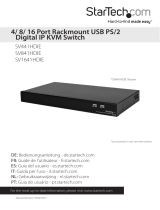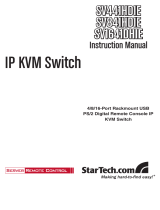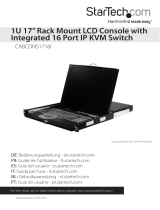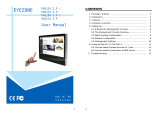
Instruction Manual
10
The information displayed for your own network may vary signicantly from the data
displayed in the image, but should supply (at minimum) three essential details: IP address,
MAC address, and device (or machine) name for the computers and other devices
connected to your network. The values for the SV1115IPEXT tested above are as follows:
IP Address: 192.168.22.4
MAC Address: 00-0E-C5-00-08-1A
Device Name: (none)
The easiest way to identify your SV1115IPEXT on the network is by its MAC address, a
unique hardware identier that is specic to your unit. The MAC address of the unit can
be found using the OSD setup screen. Write down this number and keep it for future
reference. Once you locate the MAC address of your unit in the DHCP log, you can
match it to its leased IP address and proceed with the Web conguration.
NOTE: Once you have located the IP address of the SV1115IPEXT and wish to proceed
with the Web conguration, do not power o the unit or your DHCP server, since
the Server Remote Control might lease a dierent IP address. Should this happen,
reexamine the DHCP log to verify the IP address again.
NOTE: DHCP functionality is not aected if you also connected the WAN port on the
SV1115IPEXT to your network (see below). However, it is not recommended that you
connect both the WAN and LAN ports to the same network segment.
Web Conguration Using Static IP
Since some networks rely on static IP addresses (every device has a pre-congured
IP address that does not change), the DHCP access method described above is not
applicable in those situations. To accommodate this type of installation, the WAN port
on the rear panel of the SV1115IPEXT is factory-congured with its own IP address.
NOTE: If you connected the LAN port on the rear panel of the unit to your network but
did not connect the WAN port, you must disconnect the Ethernet cable from the LAN
port and move it to the WAN port before attempting a static IP installation. (If desired,
you can return the cable to the LAN port if you congure it with a static IP address
during the conguration process.) If you have connected both the LAN and WAN ports
on the unit to your network, you may proceed with a static IP Web conguration.
The following are the default values for the WAN port, congured at the factory:
IP Address: 192.168.1.123
Subnet Mask: 255.255.255.0
Default Gateway: 192.168.1.254
Broadcast: 192.168.1.255


























